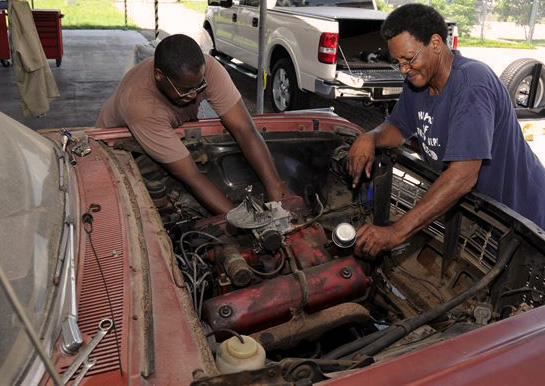
Engine Rebuild Cost Saving Tips 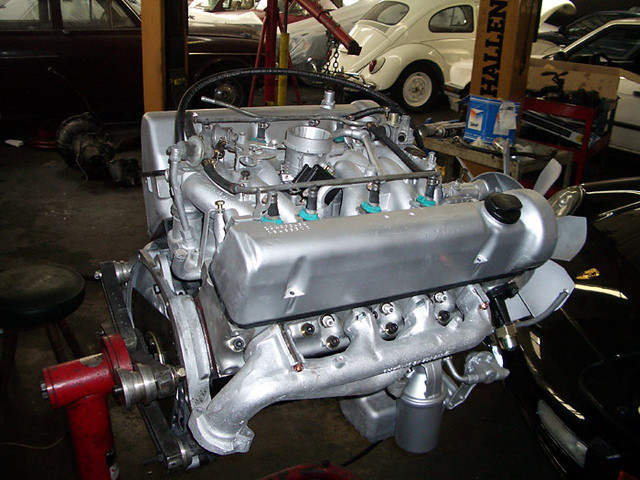 Image by Matt
Image by Matt
One of the big reasons to rebuild an engine is that, if done right, it can be significantly less expensive than purchasing a new one. If your budget is particularly tight, you’ll be looking to save every penny you can. Following these engine rebuild cost saving tips below will help your dollar go further when you’re working to get your favorite ride back on the road.
Do your research
When you have a limited budget, you can’t afford to throw away money on parts that don’t fit your engine or to make a mistake mid-rebuild. Make sure to do as much research as possible before beginning. Find out your engine’s model, year, displacement, etc. and determine what parts will match. Get an engine building manual as specific as possible to your engine with detailed instructions. And wait to order parts until you’re absolutely certain what you need.
Only replace what needs to be replaced
Why….
Car Restoration 101: What to Remember Before You Begin 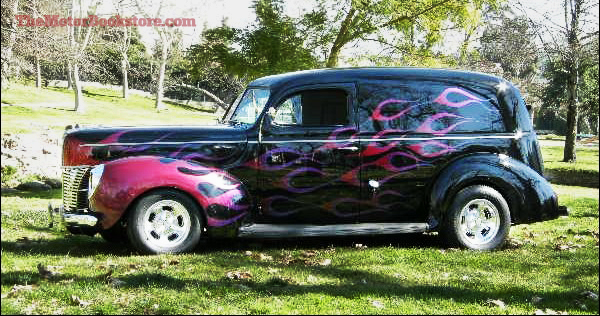
Whether you’re looking to repair a car that was in an accident, fix up a classic ride, or just want to learn more about vehicles, car restoration can be a fun and rewarding pastime. But if you’re new to restorations, the prospect of rebuilding an entire vehicle can seem daunting. This guide will help you get everything in order so your first restoration project goes as smoothly as possible.
Pick the right car
You don’t want your first project to be a total rust-bucket that’s nearly impossible to find parts for – especially if you’re doing this as a hobby. Search the classified ads and Craigslist, talk to local car clubs for leads, and keep an open mind. Make sure to get a car that’s solid, complete and rust-free. If you have a car you’re eyeing, learn as much about it as possible before you buy, including what parts are used. The internet and automotive manuals are a big help for….
Which Antifreeze is Right for Your Vehicle?
Vehicle antifreeze used to be simple. You went to the parts store, picked up a jug of green liquid, mixed it 50/50 with water and poured it into your radiator. But now with yellow, orange, blue, pink and red antifreezes covering the shelves, it can be hard to know what to get. This overview will help you make the right choice for your vehicle.

Green and Yellow Antifreeze: Photo by Anthony Easton
Types of antifreeze
For all the available colors, there are three basic types of antifreeze. Traditional green antifreeze uses Inorganic Acid Technology (IAT) and is fortified with silicates and phosphates such as ethylene glycol (EG) or propylene glycol (PG), which prevent acid buildup and prevent metal corrosion. This needs to be replaced every three years or 36,000 miles, as the additives are eventually consumed.
As for modern antifreezes, Organic Acid Technology….
How to Learn Car Restoration
Car restoration is a leading passion among many vehicle enthusiasts – and is a booming industry in its own right. But how, exactly, does one learn the process of rebuilding an automobile? This guide from The Motor Bookstore offers a number of tips and places to look for information as you pursue your newest hobby.
Start small. Get a cheap-but-working clunker from a junkyard or auto auction that you can use to learn the basics – oil and filter changes, brake systems, etc. You’ll gain a lot from working on your own vehicle, and if you do make any big mistakes, they at least won’t be expensive ones. Get help from – and help – your friends. You’re sure to have at least one or two friends or family members in your circle who likes working on cars, and they usually have car-minded friends as well. Offer to help out on their next project, and consult them whether you run into a roadblock on your own project. Car enthusiasts are a tight-knit community, and they’re almost always happy to share knowledge. Read books. There are a number of automotive….
Toyota Camry Head Light Bulb Change Guidance Tips
The Toyota Camry is the best-selling car in North America, and one of the biggest reasons is that they’re easy to maintain. Oil changes, filter changes and other basic maintenance are easy to do in your own garage or driveway. Changing head light bulbs is no exception, and with this guide, you’ll learn how to do it without a trip to your mechanic.
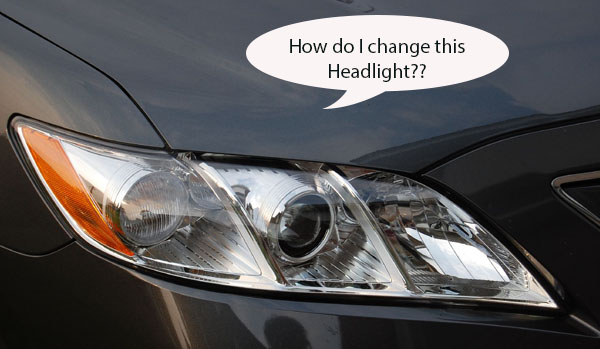
Head light bulb guide
For the 2007-2016 generation of Toyota Camrys, you’ll need H11 bulbs for the low-beam head lights, and 9005/HB3 bulbs for the high-beams. Toyota Camrys made from 2000-2006 use 9006/HB4 low-beam head light bulbs and 9005/HB3 high-beam bulbs. Older Camrys use 9003/H4 bulbs. Consult your vehicle manual for more information about how to change head light bulbs.
Change the head light bulbs
After popping the hood, locate the low- or high-beam headlight that needs to be changed. Remove the wire….
The 10 Best Cars to Restore

There are seemingly endless car restoration options available for newcomers and experienced mechanics alike. But some cars stand out from the pack, whether for mechanics, available parts, resale value or available support. The Motor Bookstore presents our picks for the 10 best cars to restore:
1964-1968 Ford Mustang. With its simple mechanics, widely available parts and large support network, the first-generation Ford Mustang remains the king of car restorations and is a great first-time project. 1967-1969 Chevrolet Camaro RS. First-generation Camaros are known for being reliable, fun to drive and easy to work on. These cars share parts with same-year Pontiac Firebirds, and you can even order new bodies. 1971-1972 Pontiac GTO. While all GTOs are great restore candidates, the later second-generation models are more affordable. Interest from collectors is increasing for this classic car, giving it a high resale value. 1968-1970 AMC AMX. This muscle/sports car hybrid was one of the best handling cars of its era. Less than 20,000 were produced, so parts may be hard to find,….
Automotive Air Conditioner Recharging Steps, Tips and Strategies Overview
When it’s 95 degrees on a July afternoon, the last thing you need is for your vehicle’s air conditioning vents to blow warm air. Tiny amounts of refrigerant leak from your A/C system lines over time, and this eventually adds up to subpar cooling. With this step-by-step guide, you’ll learn how to recharge your existing A/C system and restore great cooling performance.
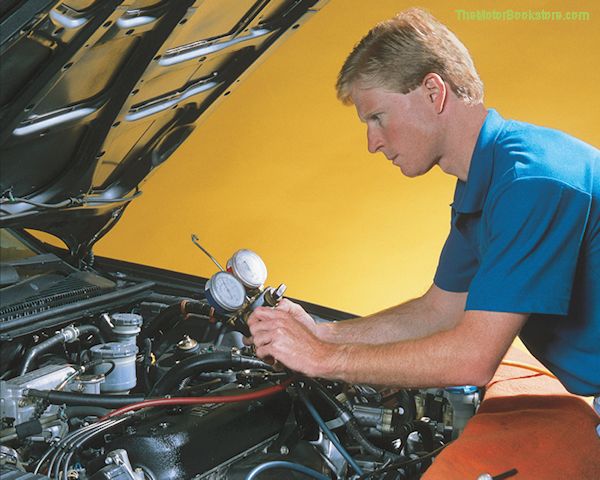
Source: Haynes 10425 – Automotive Heating & Air Conditioning Guide
WHAT YOU’LL NEED: 1-2 12 oz. cans of R-134a refrigerant (for vehicles 1994 and newer); one refrigerant dispenser with pressure gauge and trigger; one pair of goggles
After putting on the goggles, insert one can of refrigerant into the bottom of the dispenser and screw it in until tight. Locate the fill port for the A/C system. This is usually on the left side of the engine bay, protruding from the firewall, and has….
Battery versus Alternator: Which One is Bad?
Batteries and alternators go together like peanut butter and jelly, with the battery starting the vehicle and the alternator charging the battery. But if the vehicle suddenly won’t start, how can you tell which one has gone bad? The Motor Bookstore looks at how to test your battery and alternator so you’ll know which needs to be replaced.
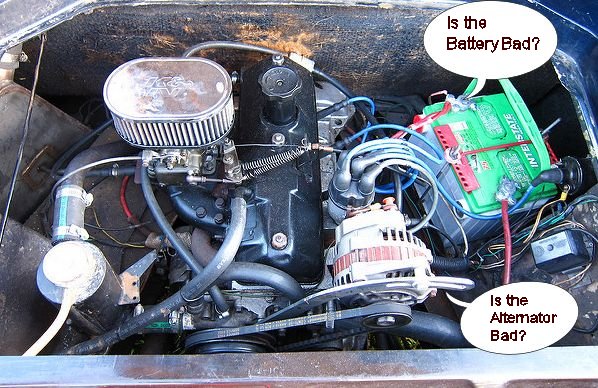
Engine Bay: Photo by BradleyOlin
The battery
You should always start by checking the battery, because this is easier both to check and replace. An early sign your battery is going dead is if you hear a low whining sound when you start the vehicle. If it’s gotten to the point where it won’t start, there are a few diagnostic options. After jump-starting the vehicle, let it run for 20-30 minutes; if the vehicle won’t start again after turning it off, the battery is no longer holding a….
How to Tell if Your Fuel Pump is Bad – Tips and Strategies
Having a full tank of fuel doesn’t do any good if it can’t get to your vehicle’s engine, which is where your fuel pump comes in. But like any mechanical part, a fuel pump won’t last forever. These tips and warning signs will help you determine if the fuel pump needs to be replaced on your vehicle.

1986 Bronco II Fuel Pump Assembly – Photo by Marion Doss
You hear a whining or howling noise from the fuel tank. Electric fuel pumps make a clicking or buzzing sound when they’re functioning normally. Whining, howling and whirring are early signs the pump is going south. Your vehicle suddenly “surges” when moving at consistent speed. You’re driving at 35 mph, and your vehicle suddenly speeds up to 40 mph even though you didn’t press any harder on the gas pedal. It could be ghosts in the machine – or a….
Vehicle Service Manuals: OEM vs. DIY Aftermarket
So you’ve decided to learn more about your vehicle, and are looking for the best manual you can find. But where do you start? You’d like to get an original factory manual – but is a less expensive aftermarket DIY manual from Haynes, Chilton, or Clymer exactly what you need? The Motor Bookstore examines the upside of each.
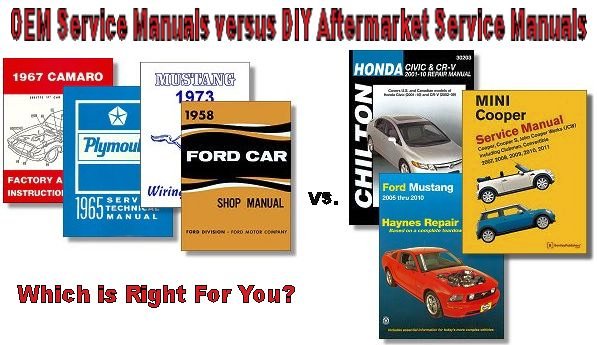
OEM/factory manuals
OEM, or “original equipment manufacturer” manuals, offers the most information you can find about your vehicle. They’re written by the company that built the vehicle and are aimed at professional technicians and advanced mechanics. Different types of OEM manuals can include service manuals, wiring manuals, unit repair manuals and owner’s manuals. These manuals are usually hundreds and even thousands of pages. While they can be expensive and harder to find for older vehicles, and the sheer amount of information can be overwhelming for newcomers,….
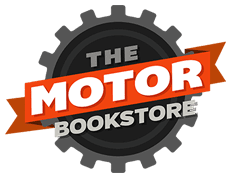
 Shop Store
Shop Store
